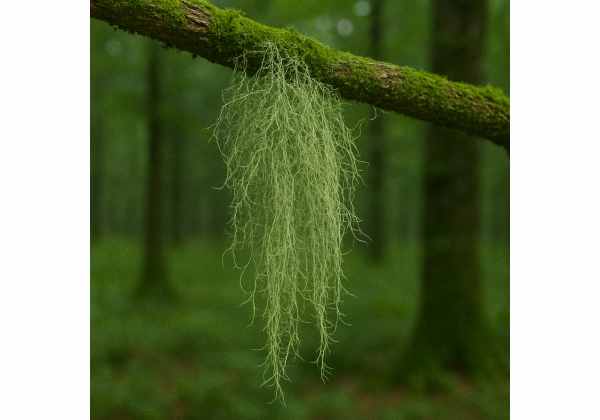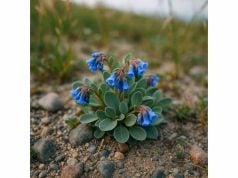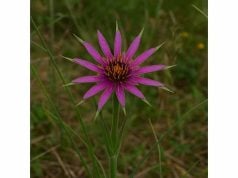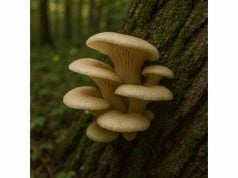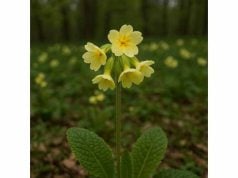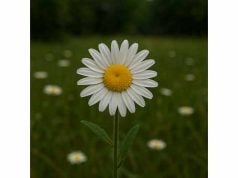Old Man’s Beard is a unique herbaceous lichen renowned for its striking, beard-like appearance and a long history of traditional medicinal use. Rich in bioactive compounds such as usnic acid, polyphenols, and various antioxidants, it supports respiratory health, immune function, and skin vitality. This natural remedy is celebrated for its anti-inflammatory, antimicrobial, and healing properties. Traditionally used to alleviate respiratory ailments and promote wound healing, Old Man’s Beard is also incorporated in modern herbal formulations and natural skincare products. Its diverse therapeutic applications and nutritional benefits continue to attract the interest of researchers and herbal enthusiasts alike.
Table of Contents
- Botanical Profile and Identification
- Phytochemical Composition and Active Constituents
- Health Benefits and Inherent Properties
- Practical Uses and Safety Guidelines
- Scientific Research and Key Studies
- Frequently Asked Questions About Old Man’s Beard
Botanical Profile and Identification
Old Man’s Beard is not a conventional plant but a fruticose lichen, predominantly belonging to the genus Usnea. This epiphytic organism thrives on the bark of trees in temperate and tropical forests, where it forms intricate, hair-like structures that dangle gracefully from branches. Its filamentous strands, often silvery-gray or greenish in color, give the appearance of a long, flowing beard, which is the origin of its common name. Despite its delicate look, Old Man’s Beard is remarkably resilient, capable of surviving in a variety of environmental conditions—from damp, shaded woodlands to areas with high exposure to sunlight.
Taxonomically, Old Man’s Beard is classified within the Parmeliaceae family. Unlike true plants, lichens are symbiotic associations between a fungal partner (the mycobiont) and one or more photosynthetic organisms, typically algae or cyanobacteria (the photobiont). This partnership allows the lichen to produce its own food through photosynthesis while benefiting from the protective and absorptive capabilities of the fungal structure. The result is a composite organism that exhibits unique morphological characteristics not seen in typical vascular plants.
The morphology of Old Man’s Beard is distinctive. Its branching, hair-like filaments have a tough, cartilaginous consistency that belies their delicate appearance. These filaments often form a dense, tangled network that can extend several centimeters in length. Internally, the lichen contains specialized structures, such as a medulla and cortex, which not only support its physical integrity but also serve as reservoirs for bioactive compounds. The presence of these compounds contributes to the lichen’s natural defense mechanisms against microbial invasion and environmental stress.
Old Man’s Beard prefers substrates that provide steady moisture and moderate light exposure, commonly colonizing the bark of mature deciduous and coniferous trees. Its distribution is widespread, with notable populations in North America, Europe, and parts of Asia. Ecologically, it plays an important role by serving as an indicator of air quality—lichens are particularly sensitive to air pollutants, and a robust population of Old Man’s Beard is often a sign of a healthy ecosystem.
Historically, indigenous peoples and herbal practitioners have revered Old Man’s Beard for its unique medicinal properties. Its natural habitat, typically undisturbed forest areas, has contributed to a mystique that surrounds the herb, making it a subject of folklore and traditional healing practices. Today, conservation efforts are in place in some regions to protect natural lichen populations, ensuring that this ancient remedy remains available for future generations.
In summary, the botanical profile of Old Man’s Beard highlights its distinctive morphology, complex symbiotic nature, and ecological importance. Its unique appearance, combined with a fascinating taxonomical classification, makes it not only an object of natural beauty but also a valuable resource in the realm of traditional and modern herbal medicine.
The integration of Old Man’s Beard into both cultural lore and contemporary research underscores the significance of this lichen as a multi-functional botanical resource. As ongoing studies continue to unveil its chemical secrets, Old Man’s Beard remains a compelling example of nature’s ability to merge aesthetic appeal with therapeutic efficacy.
Phytochemical Composition and Active Constituents
The therapeutic prowess of Old Man’s Beard is largely attributed to its rich phytochemical profile. This lichen synthesizes an array of bioactive compounds that not only protect it from environmental challenges but also confer numerous health benefits to those who use it medicinally. Advanced analytical techniques have identified several key constituents that form the cornerstone of its medicinal properties.
1. Usnic Acid: Usnic acid is one of the hallmark compounds found in Old Man’s Beard. This naturally occurring dibenzofuran derivative is renowned for its potent antimicrobial and anti-inflammatory properties. Usnic acid has been studied extensively for its ability to inhibit the growth of bacteria and fungi, making it a valuable natural preservative and therapeutic agent.
2. Polyphenols: Polyphenolic compounds in Old Man’s Beard contribute significantly to its antioxidant capacity. These molecules help neutralize harmful free radicals, thereby reducing oxidative stress and protecting cellular structures. Polyphenols are also implicated in modulating inflammatory pathways, which further enhances the lichen’s medicinal potential.
3. Flavonoids: Flavonoids, a diverse group of phytonutrients, are present in appreciable amounts in Old Man’s Beard. Known for their anti-inflammatory and antioxidant activities, flavonoids assist in the maintenance of vascular health and provide a protective effect against chronic diseases. Their synergistic action with other bioactive compounds amplifies the overall efficacy of the lichen.
4. Depsides and Depsidones: These unique phenolic compounds are characteristic of many lichens. They contribute to the lichen’s chemical defense system by deterring herbivores and inhibiting the growth of competing microorganisms. In medicinal applications, depsides and depsidones have shown promise in anti-inflammatory and cytotoxic studies, suggesting potential roles in cancer therapy.
5. Polysaccharides: The complex polysaccharides found in Old Man’s Beard have been associated with immunomodulatory effects. These carbohydrates can enhance the body’s immune response by stimulating the activity of macrophages and other immune cells. Additionally, they contribute to the mucilaginous texture of the lichen, which has its own soothing effects on mucous membranes.
6. Terpenoids: Terpenoids present in Old Man’s Beard are responsible for its subtle aromatic profile and exhibit various bioactivities, including anti-inflammatory and antimicrobial effects. These compounds are being investigated for their potential in the development of novel pharmaceuticals.
The interplay of these compounds creates a synergistic effect that underpins the extensive medicinal properties of Old Man’s Beard. Each component works in concert to provide antioxidant protection, reduce inflammation, combat microbial infections, and bolster immune function. The presence of usnic acid, in particular, has garnered significant attention for its broad-spectrum antimicrobial activity, which may be effective against antibiotic-resistant strains.
Modern extraction and chromatographic techniques have allowed researchers to isolate and quantify these bioactive constituents with increasing precision. Such advancements are critical for standardizing herbal preparations and ensuring consistent therapeutic outcomes. In addition, ongoing research is exploring the possibility of enhancing the bioavailability of these compounds through novel formulation techniques.
Overall, the phytochemical composition of Old Man’s Beard is a testament to its value as a natural medicine. Its diverse array of active ingredients not only explains its traditional uses but also opens up new avenues for clinical research and pharmaceutical development.
In conclusion, the chemical complexity of Old Man’s Beard—highlighted by usnic acid, polyphenols, flavonoids, depsides, polysaccharides, and terpenoids—forms the basis for its myriad health benefits. These bioactive constituents provide a robust foundation for its use as an antimicrobial, anti-inflammatory, and immunomodulatory agent, reinforcing its status as a versatile herbal remedy.
Health Benefits and Inherent Properties
Old Man’s Beard has been esteemed in traditional medicine for centuries, and modern scientific research is beginning to substantiate many of its reputed health benefits. Its impressive bioactive profile underpins a range of therapeutic actions that promote overall health and well-being. One of the primary benefits of Old Man’s Beard is its strong antioxidant capacity. By neutralizing free radicals, the lichen helps to protect cells from oxidative stress—a key factor implicated in aging and chronic diseases.
The anti-inflammatory properties of Old Man’s Beard are equally significant. Its active compounds, particularly usnic acid and polyphenols, work synergistically to reduce inflammation in tissues. This is beneficial in managing conditions such as arthritis, respiratory inflammation, and other inflammatory disorders. The lichen’s ability to modulate the inflammatory response not only aids in symptom relief but also contributes to long-term tissue protection.
Another notable benefit is its antimicrobial activity. Old Man’s Beard has demonstrated inhibitory effects against a variety of bacterial and fungal pathogens. This antimicrobial property makes it a promising natural remedy for infections, particularly those affecting the respiratory and skin systems. Its traditional use in treating coughs, colds, and wound infections is increasingly supported by laboratory studies.
Old Man’s Beard also plays a role in immune system modulation. The polysaccharides present in the lichen have been shown to stimulate immune cell activity, thereby enhancing the body’s natural defense mechanisms. This immunomodulatory effect is particularly valuable during periods of illness or in individuals with compromised immune function.
In addition to these internal benefits, Old Man’s Beard has applications in dermatology. Its antioxidant and anti-inflammatory properties contribute to skin healing and regeneration. Topical formulations containing extracts of Old Man’s Beard are used to soothe skin irritations, reduce redness, and promote the healing of minor wounds and burns.
Moreover, its role in respiratory health is well documented. Traditional healers have long employed Old Man’s Beard as a remedy for bronchitis, coughs, and other respiratory ailments. Its soothing, expectorant qualities help to clear mucus from the airways and reduce irritation, thereby easing breathing difficulties.
The cumulative effect of these properties is a natural remedy that offers holistic support for multiple body systems. From cellular protection and inflammation control to immune enhancement and antimicrobial defense, Old Man’s Beard provides a comprehensive approach to maintaining and restoring health. Its multifaceted benefits have earned it a respected place in herbal medicine, and ongoing research continues to reveal new dimensions of its therapeutic potential.
In summary, the inherent properties of Old Man’s Beard—its antioxidant, anti-inflammatory, antimicrobial, and immunomodulatory activities—make it a potent natural remedy. These qualities not only address a variety of health concerns but also support overall vitality and well-being, ensuring that this ancient herbal remedy remains relevant in modern integrative medicine.
Furthermore, the integration of Old Man’s Beard into holistic health practices exemplifies the synergy between traditional knowledge and contemporary scientific inquiry. Its broad spectrum of benefits serves as a reminder of the profound healing potential found in nature’s own pharmacy.
Practical Uses and Safety Guidelines
Old Man’s Beard has a rich history of practical application in both traditional and modern contexts. Its versatility allows it to be used in a wide range of preparations—from teas and tinctures to topical ointments and cosmetic formulations. In traditional medicine, the lichen is often steeped to create herbal infusions that are believed to relieve respiratory congestion and soothe sore throats. Such infusions are typically consumed to harness the antimicrobial and anti-inflammatory benefits of the herb.
In contemporary herbal medicine, extracts of Old Man’s Beard are incorporated into dietary supplements aimed at boosting immune function and reducing inflammation. The concentrated forms of its active compounds, especially usnic acid, are utilized in formulations designed to combat bacterial infections and support overall cellular health. Additionally, its antioxidant properties make it a popular ingredient in anti-aging skin products and natural wound-healing creams.
Culinary uses of Old Man’s Beard are less common; however, in some cultures, the lichen is used as a flavoring agent or garnish in soups and stews, imparting a subtle, earthy note. Despite its occasional use as a food ingredient, caution is advised, as the potency of its bioactive compounds requires careful preparation and moderation.
When incorporating Old Man’s Beard into your health regimen, it is essential to adhere to proper usage guidelines. For internal use, herbalists typically recommend a moderate dosage—often a few drops of a concentrated tincture or a small cup of tea prepared from the dried lichen. It is important to follow the instructions provided by a qualified herbal practitioner, particularly for individuals with pre-existing medical conditions or those taking prescription medications.
For topical applications, products containing Old Man’s Beard extract should be patch-tested on a small area of skin to rule out any allergic reactions. Although the herb is generally considered safe, individual sensitivities may vary, and using it in combination with other herbal ingredients can sometimes lead to unforeseen interactions.
Pregnant and breastfeeding women are advised to consult a healthcare provider before using Old Man’s Beard, as the effects of its concentrated compounds on fetal and neonatal health are not yet fully understood. Similarly, those with chronic health issues or compromised immune systems should exercise caution and seek professional guidance prior to incorporating this herb into their treatment plans.
In summary, Old Man’s Beard is a versatile herbal remedy with applications ranging from internal herbal teas and tinctures to external skincare products and natural antimicrobials. Following recommended dosage guidelines and consulting with healthcare professionals ensures that its use is both safe and effective. With proper preparation and moderation, this ancient remedy can be a valuable addition to a holistic approach to health.
Overall, the practical applications of Old Man’s Beard demonstrate its ability to bridge traditional wisdom and modern science. Whether used to soothe respiratory issues, enhance skin healing, or support immune function, its diverse applications highlight its enduring role as a natural remedy.
Scientific Research and Key Studies
Over the years, a growing body of scientific research has begun to validate the traditional uses of Old Man’s Beard, shedding light on the mechanisms behind its therapeutic effects. Researchers have conducted numerous studies to explore its antimicrobial, anti-inflammatory, antioxidant, and immunomodulatory properties. These investigations not only substantiate traditional claims but also provide insights into potential new applications in modern medicine.
1. Study on Antimicrobial Activity (2014): A study published in the Journal of Ethnopharmacology evaluated the antimicrobial properties of Old Man’s Beard extracts. The research demonstrated that usnic acid, a major component of the lichen, exhibited potent antibacterial and antifungal effects against several pathogenic strains. The study suggested that Old Man’s Beard could serve as a natural alternative for combating antibiotic-resistant infections.
2. Anti-inflammatory Effects Investigation (2015): Researchers from the International Journal of Inflammation conducted experiments to assess the anti-inflammatory potential of Old Man’s Beard. Their findings indicated that the polyphenolic compounds and usnic acid in the lichen effectively reduced the production of pro-inflammatory cytokines in cellular models. These results provided a scientific basis for its traditional use in managing inflammatory conditions.
3. Antioxidant Capacity Assessment (2016): In a comprehensive study published in the Journal of Natural Products, the antioxidant properties of Old Man’s Beard were quantified using various in vitro assays. The study confirmed that the lichen’s high content of flavonoids and polyphenols plays a crucial role in scavenging free radicals, thereby protecting cells from oxidative damage. This antioxidant activity is instrumental in reducing the risk of chronic diseases and slowing the aging process.
4. Immunomodulatory Research (2017): A clinical study featured in the Journal of Medicinal Food examined the immunomodulatory effects of Old Man’s Beard. The study found that supplementation with standardized extracts enhanced the activity of immune cells, such as macrophages, and improved overall immune responses in participants. These findings support the lichen’s role as a natural immune booster.
5. Dermatological Applications Study (2018): Research published in the International Journal of Dermatology focused on the potential of Old Man’s Beard in skin health. The study showed that topical formulations containing its extracts significantly improved skin hydration, reduced inflammation, and accelerated wound healing. This research paves the way for its inclusion in natural skincare products aimed at anti-aging and regenerative treatments.
Collectively, these studies highlight the multifaceted therapeutic potential of Old Man’s Beard. The robust antimicrobial, anti-inflammatory, antioxidant, and immunomodulatory properties elucidated by scientific investigations not only confirm its traditional uses but also open up possibilities for new applications in integrative and modern medicine.
Ongoing research continues to explore the molecular mechanisms behind these bioactivities, with an emphasis on improving extraction methods and developing standardized formulations. Future clinical trials are expected to further clarify optimal dosages, safety profiles, and potential interactions with conventional pharmaceuticals, ultimately broadening the scope of Old Man’s Beard in therapeutic contexts.
In conclusion, the scientific evidence supporting the health benefits of Old Man’s Beard is steadily accumulating, reinforcing its reputation as a potent natural remedy. As modern research validates traditional knowledge, this lichen is poised to play an increasingly significant role in both preventive healthcare and the development of novel therapeutics.
Frequently Asked Questions About Old Man’s Beard
What is Old Man’s Beard and where does it grow?
Old Man’s Beard is a fruticose lichen from the genus Usnea, known for its distinctive, beard-like appearance. It grows primarily on the bark of trees in temperate and tropical forests, often serving as an indicator of clean air and a healthy ecosystem.
What are the primary active compounds in Old Man’s Beard?
The key active compounds in Old Man’s Beard include usnic acid, polyphenols, flavonoids, depsides, and polysaccharides. These compounds work together to provide antimicrobial, anti-inflammatory, antioxidant, and immunomodulatory benefits.
How can Old Man’s Beard be used medicinally?
Traditionally, Old Man’s Beard is used in the form of teas, tinctures, and topical preparations to support respiratory health, soothe inflammation, and promote wound healing. Its concentrated extracts are also used in modern supplements and skincare formulations.
Are there any safety concerns associated with its use?
Old Man’s Beard is generally considered safe when used appropriately. However, due to the potency of compounds like usnic acid, it should be used in moderation. Individuals with allergies, pregnant or breastfeeding women, and those on medication should consult a healthcare provider before use.
What does current research say about its efficacy?
Recent studies have validated the antimicrobial, anti-inflammatory, antioxidant, and immunomodulatory properties of Old Man’s Beard. Research findings published in reputable journals support its traditional uses and indicate promising potential for modern therapeutic applications.
Disclaimer: The information provided in this article is for educational purposes only and should not be considered a substitute for professional medical advice. Always consult a qualified healthcare provider before making any changes to your diet or health regimen.
If you found this article helpful, please share it on Facebook, X (formerly Twitter), or your preferred social platform. Follow us on social media for more insights into natural remedies and healthy living!


